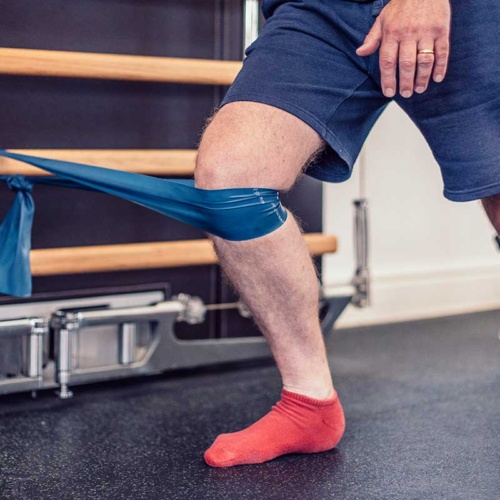As a Physiotherapist, and also a keen (if occasionally injury-prone) sportsman, it’s clear that there’s a lot wrong with the modern day rehabilitation process in the UK. In general the issues fall under four headings; the system, the Physios, the process and last but by no means least, the patients themselves.
Let’s start with the system
First off, there’s the public/private divide. On one hand, private practices are by definition exclusive and, in reality, only available to a minority, and on the other, there’s often a lack of quality of care in the public system.
The NHS is fighting a losing battle and the vast majority of the problems facing it’s Physiotherapy capability are the result of a lack of funding, rather than any lack of ability, commitment or effort on behalf of the therapists themselves.
Though any Physiotherapy is better than none, it’s not unusual for NHS patients to have to wait around 6 weeks for their first appointment, and another for 2-3 weeks for each subsequent one. Continuity and consistency of care is difficult; patients have little or no control over the choice of Physio, let alone their therapist’s experience and the relevance of any specialities they may have.
My heart goes out to the Physios involved, who are doing their utmost to deal with problems that they’re seeing too late and can do too little about. But in truth, my profession doesn’t always help itself.
Physiotherapists aren’t blameless, either
The practices within the industry in the UK (both private and public) are often not always perfect, with many Physios still using old and outmoded techniques.
Take Ultrasound treatment as a prime example. Research has shown this old fashioned technique to be nothing more than placebo – 30% effective whether or not it’s even turned on! (In reality it is nothing more than a gentle massage with a cool gel and a ticking noise.)
10 years ago almost all of my patients received some sort of treatment like this, but today, with significantly better evidence-based knowledge available, our clinic doesn’t have a single machine.
And it’s not just the techniques that need an overhaul. The entire Rehab process is flawed.
The process is flawed
As part of the process from therapy to rehabilitative and corrective exercise, many patients transition from their Physio to a personal trainer.
And there’s the next problem, right there. Apart from the issue of the lack of consistency and proper regulation of standards in the in personal training industry (and best not get me started on that topic), Physiotherapists and PT’s tend to work in isolation, even within their own practices or gyms.
Information, and insights are rarely, if ever, shared. Client history is often cursory. (Could it be that neither wants to be challenged on their diagnosis, expertise or treatment/exercise plan?) At best, there’s a short note or phone call from the Physio to brief the trainer on a client’s history and injuries, at worst, it’s up to the patient to explain the history and effectively manage their own rehab process themselves.
And clearly none of that is even remotely in the patient’s interest.
And what about the patients themselves?
While rehab is (self-evidently) designed to help the patient, patients aren’t always so good at helping themselves.
When someone has a serious injury or condition, they’re usually reasonably diligent about seeking out the services of a Physio. But with smaller injuries, the “I’m in pain now, but I’m sure it’ll be fine in a couple of days” approach is a common and sensible one.
The problems begin when a couple of days becomes weeks or even months and a niggling problem become a chronic condition that will take longer and be significantly more difficult for the Physio (when he or she is finally consulted) to resolve.
In contrast to the fortunate few who are able to pay for regular private sessions, the majority of NHS patients’ rehabilitation will be performed as unsupervised exercises to be done either at home or in the gym.
This is clearly far from ideal. Patients rarely follow these programmes diligently and drop off rates are high. And from what I’ve seen when I’m doing my own training in gyms they are often unable to perform the exercises correctly or safely, (to avoid the wrath of the resident PT’s, I often have to bite my tongue).
So what’s the solution?
At TenPhysio, we were in the fortunate position of being able to start with a blank sheet of paper, and to plan and create what seems to us to be the ideal rehabilitation process.
We call it our ‘Circle of Care’ – a rehab model that’s unique in the UK and (to our best knowledge) anywhere else in the world.
It involves a multidisciplinary team of top Physiotherapists and Sports Massage Therapists at TenPhysio working closely alongside the expert Trainers, Pilates Instructors and Rehab Specialists at TenPilates. Therapists and Trainers work under the same roof, share knowledge, insights and client history freely and work together to apply the right mix of complementary skills and expertise at each stage of the client’s treatment and training.
This highly collaborative way of working offers two fundamental advantages for our clients.
First, we’re able to create a seamless and continuous progression of treatment, rehabilitation, corrective and functional exercise programmes.
And second, we’re able to continually monitor, evaluate and adapt clients’ programmes to help speed and complete recovery.





